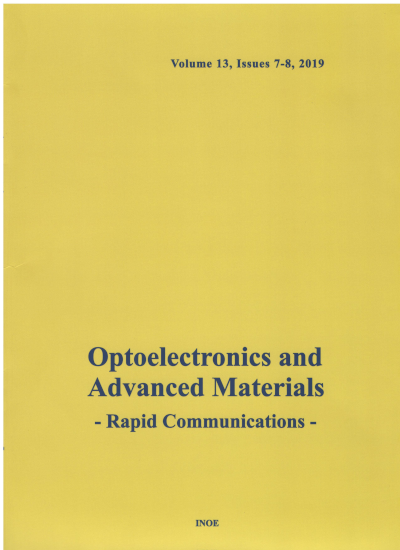Study of the effective dielectric constant of lead-free electroactive polymer-piezoceramic composites using theoretical models
AMANI ALRUWAILI1,*
Affiliation
- Department of Physics, College of Science, Northern Border University, Arar, 1321, Saudi Arabia
Abstract
The effective dielectric constant of electroactive polymer–piezoceramic composites is studied using various theoretical
models. The lead-free piezoceramic Ba0.85Ca0.15Zr0.1Ti0.9O3 (BCZT) which has interesting dielectric and piezoelectric
properties is chosen as the filler in different polymer matrices such as Polyvinylidene fluoride (PVDF):Ba0.85Ca0.15Zr0.1Ti0.9O3
(BCZT), Polyvinylidene fluoride-trifluoro ethylene, P(VDF-TrFE):BCZT, and Nylon 11:BCZT. The effective dielectric constant
depends on the polymer, and filler characteristics such as its size, shape, volume fraction, and its interaction in the
electroactive polymer matrix which is studied in the present article using theoretical models. The effect of filler volume
percentage (10–40 vol%) on the dielectric constant is studied, and results are discussed. It is found that P(VDF-TrFE):
BCZT composites at 40 vol% exhibited a higher effective dielectric constant (εr = 120) compared to PVDF: BCZT (εr = 77)
and Nylon11: BCZT composites (εr = 56). Study indicates the effectiveness of the theoretical models in predicting the
polymer composite properties and help in designing the best performing composites for non-linear optics (NLO), energy
storage, and energy harvesting applications.
Keywords
Dielectric constant, Electroactive, Polymer composites, Filler, PVDF, BCZT, Nylon11, P(VDF-TrFE).
Citation
AMANI ALRUWAILI, Study of the effective dielectric constant of lead-free electroactive polymer-piezoceramic composites using theoretical models, Optoelectronics and Advanced Materials - Rapid Communications, 19, 5-6, May-June 2025, pp.293-297 (2025).
Submitted at: April 16, 2024
Accepted at: June 3, 2025
